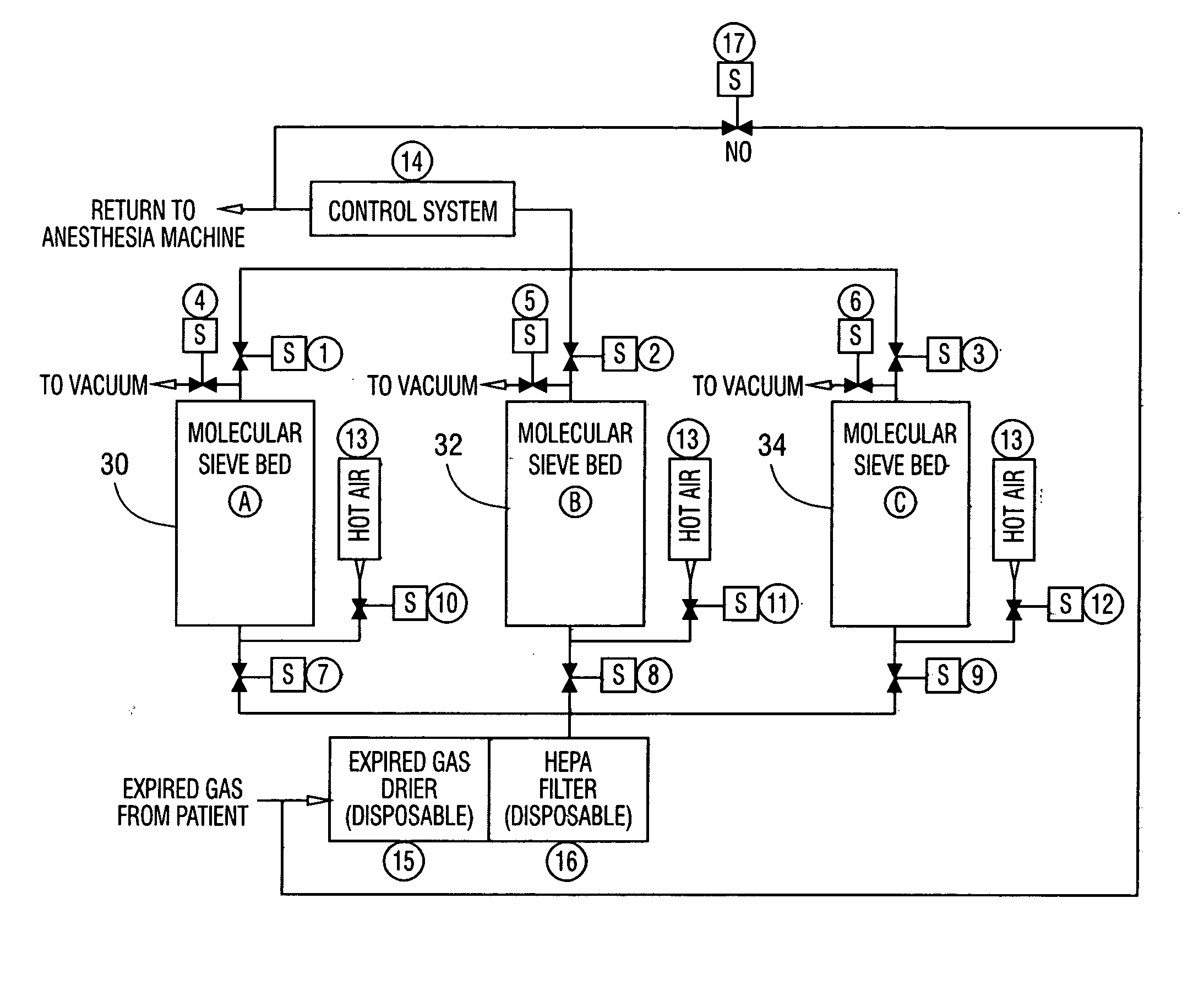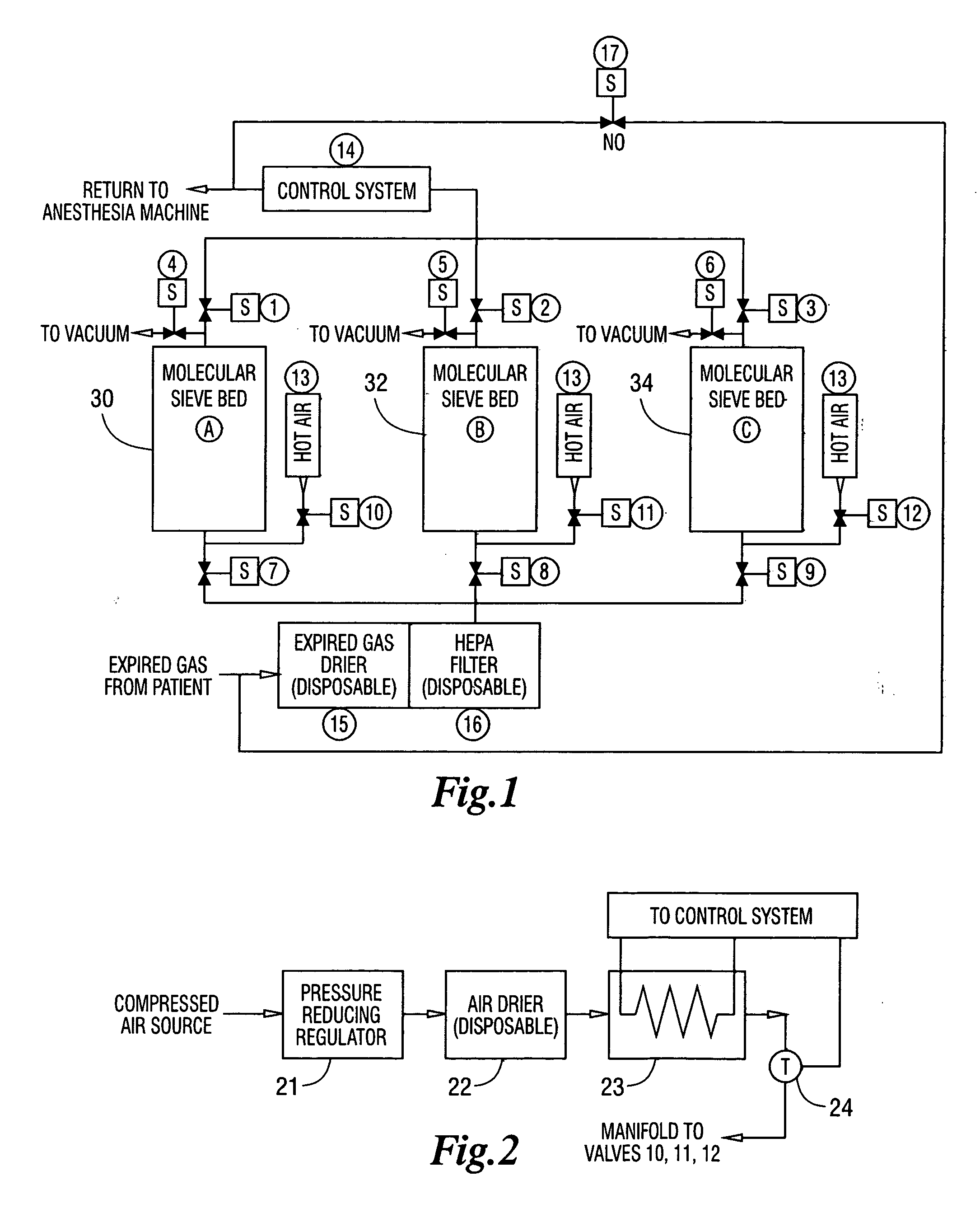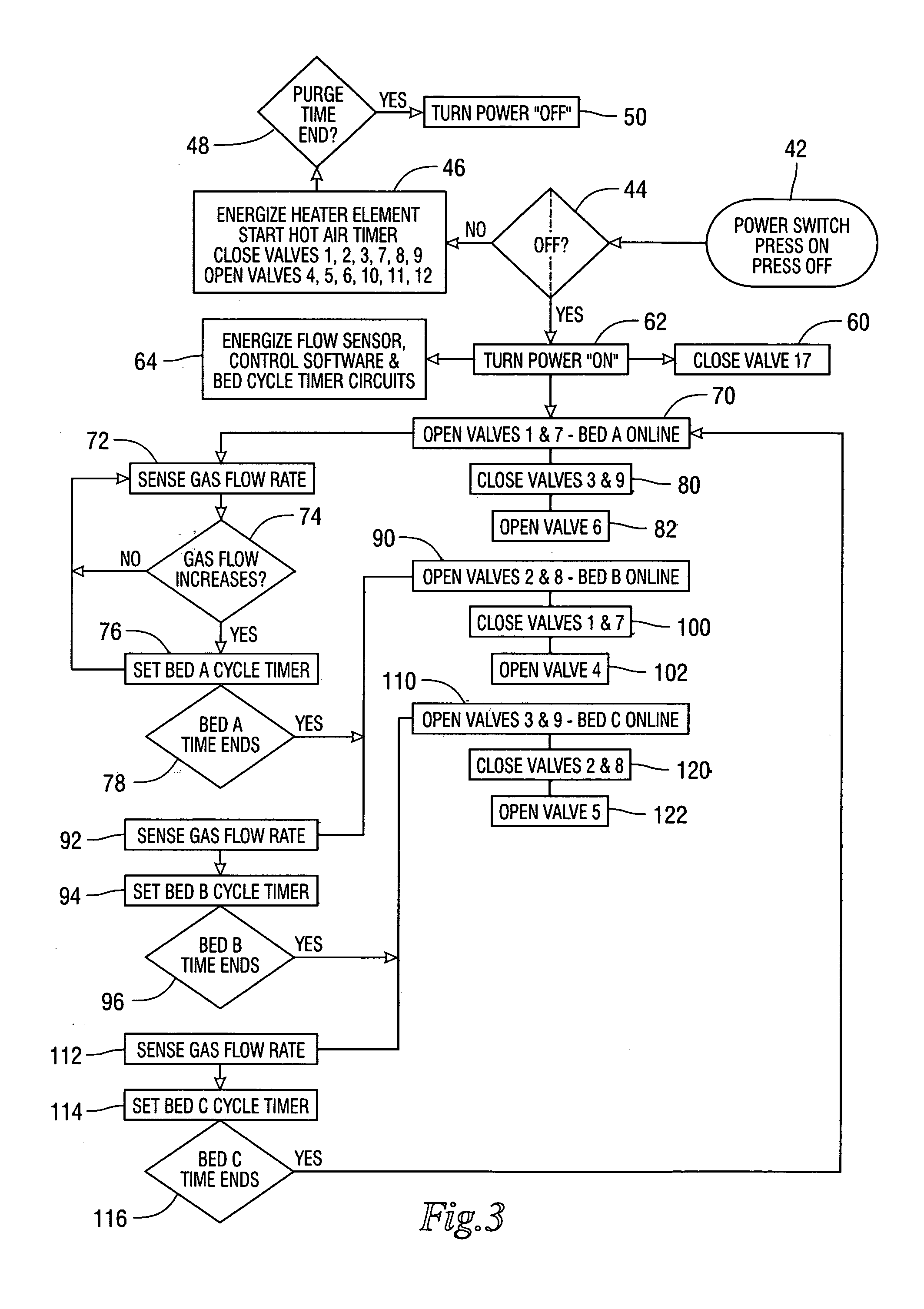Removal of carbon dioxide and carbon monoxide from patient expired gas during anesthesia
a technology of carbon dioxide and carbon monoxide and expired gas, which is applied in the direction of respirator, separation process, breathing protection, etc., can solve the problems of inefficiency of the basic materials currently in use for the removal of carbon monoxide, and achieve the effect of increasing patient safety, improving patient outcomes especially in long or frequent exposure, and increasing patient safety
- Summary
- Abstract
- Description
- Claims
- Application Information
AI Technical Summary
Benefits of technology
Problems solved by technology
Method used
Image
Examples
Embodiment Construction
[0012] The invention is a method and a system for the application of molecular sieves to the removal of carbon dioxide and carbon monoxide from the patient expired gases during anesthesia. The system and method are especially useful in anesthesia using any of the halogenated ether inhalation anesthetic agents. The expired gases are dried using a non-reactive desiccant to remove water, passed through a filter capable of removing particles larger than 0.3 microns, passed through a bed containing either natural or synthetic molecular sieves capable of removing carbon dioxide and carbon monoxide and then returned to the breathing circuit for recirculation to the patient.
Key To FIG. 1
[0013] The system of the invention is shown in FIG. 1 and has the following components:
[0014] A, B, C Suitable containers containing molecular sieves also designated 30, 32 and 34 of a type selective for Carbon Dioxide and Carbon Monoxide removal from mixed gas streams. Sieve Types A3, A4, X13 for example...
PUM
| Property | Measurement | Unit |
|---|---|---|
| vacuum | aaaaa | aaaaa |
| micro-pore structure | aaaaa | aaaaa |
| pressure | aaaaa | aaaaa |
Abstract
Description
Claims
Application Information
 Login to View More
Login to View More - R&D
- Intellectual Property
- Life Sciences
- Materials
- Tech Scout
- Unparalleled Data Quality
- Higher Quality Content
- 60% Fewer Hallucinations
Browse by: Latest US Patents, China's latest patents, Technical Efficacy Thesaurus, Application Domain, Technology Topic, Popular Technical Reports.
© 2025 PatSnap. All rights reserved.Legal|Privacy policy|Modern Slavery Act Transparency Statement|Sitemap|About US| Contact US: help@patsnap.com



